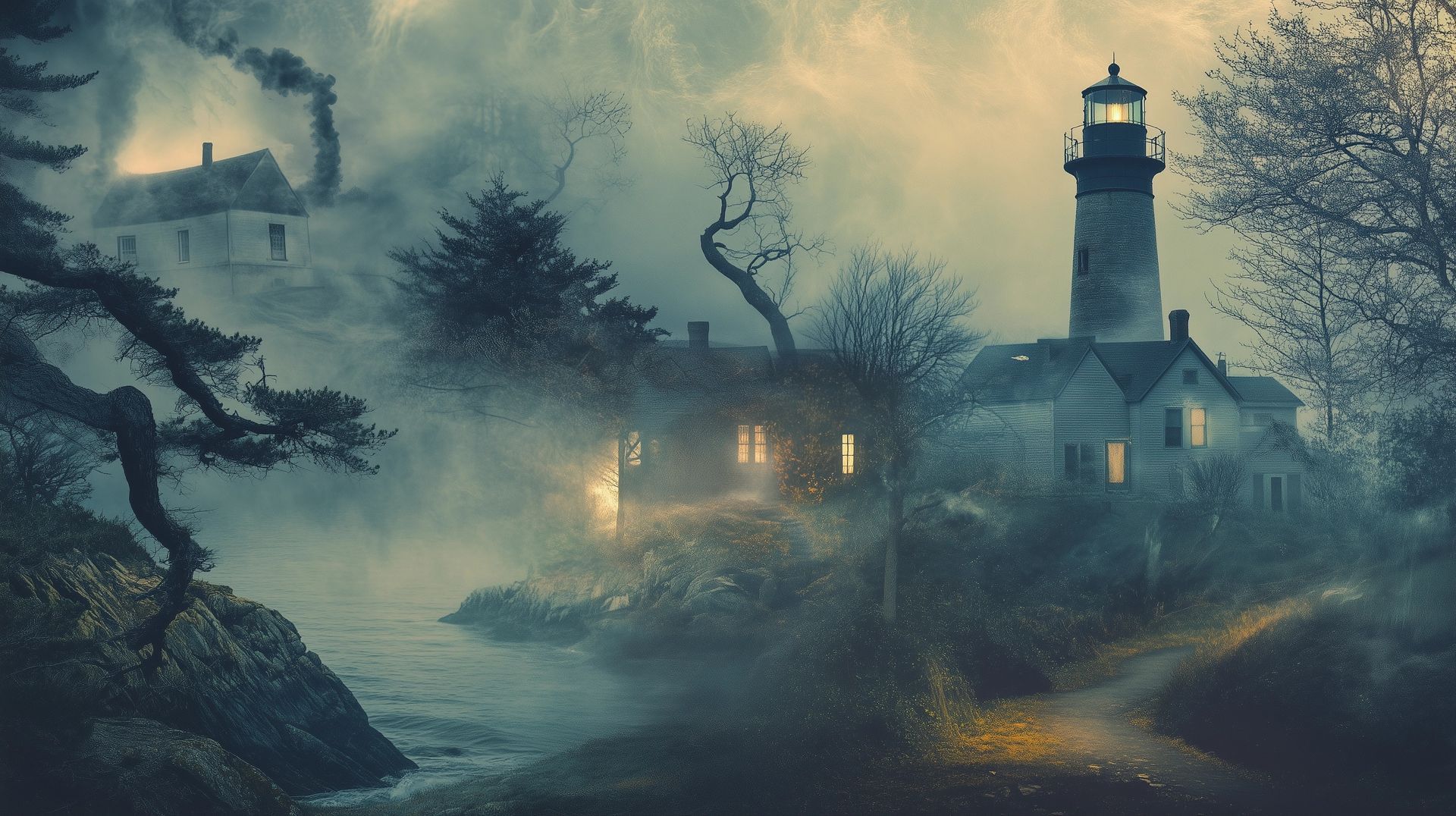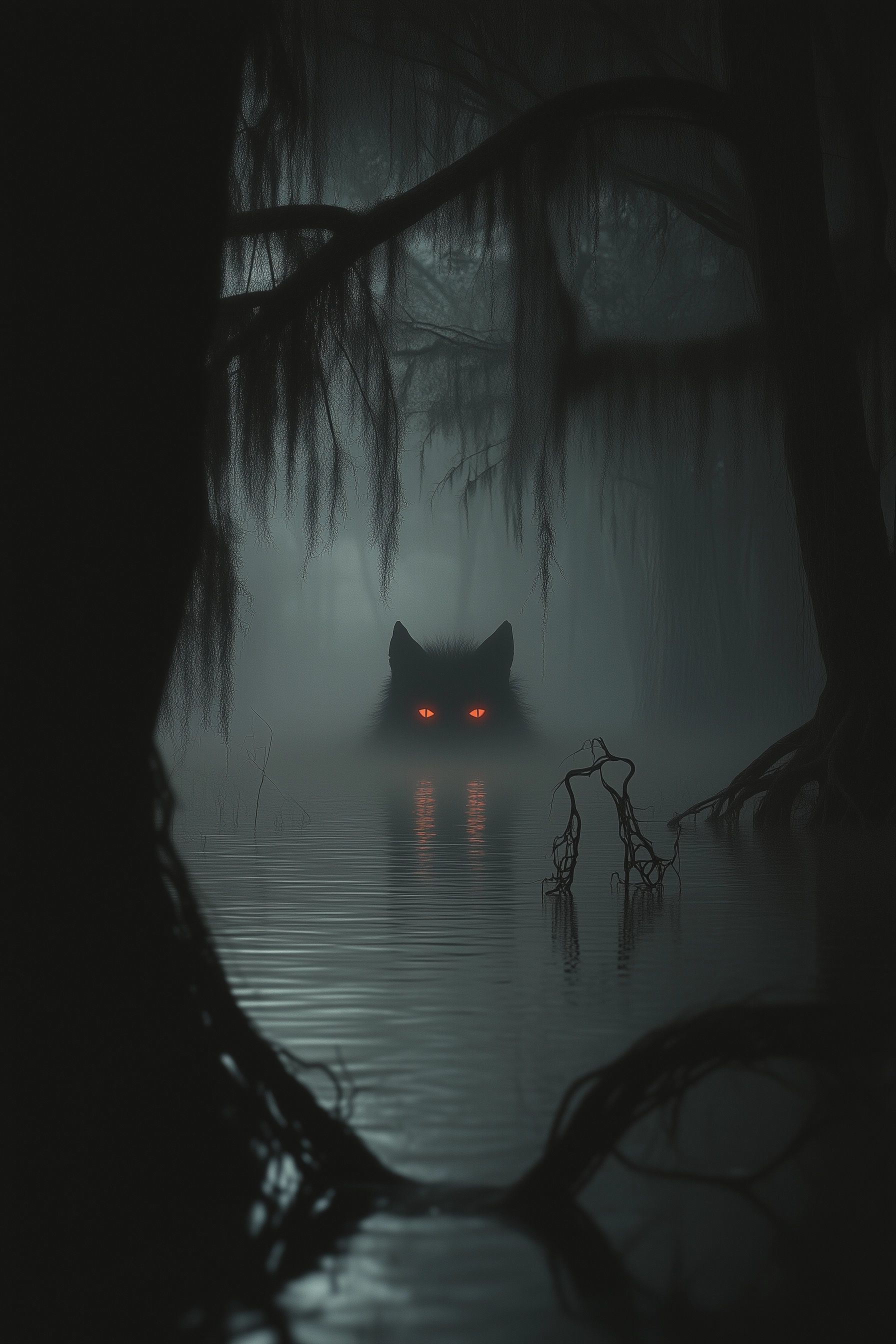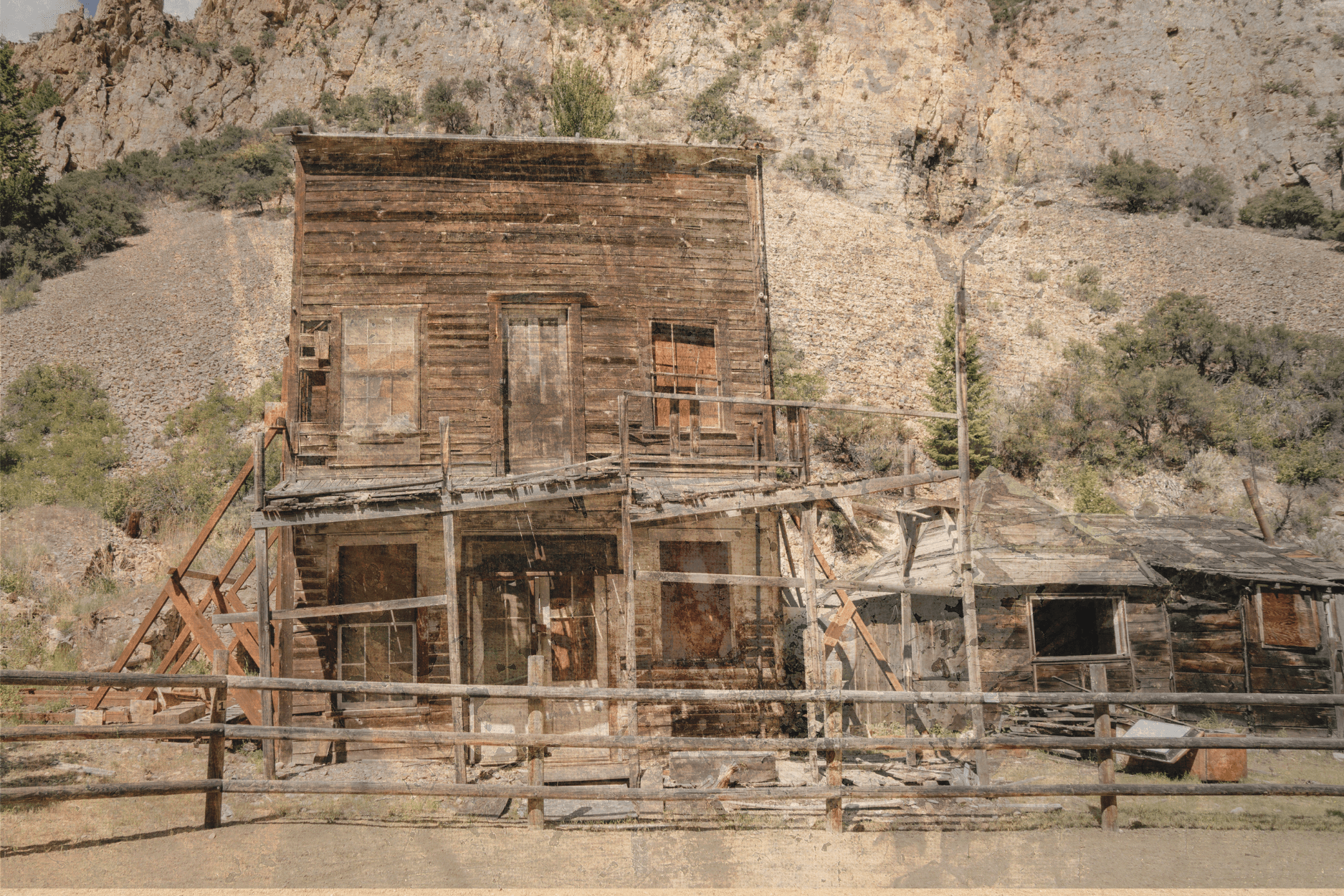Michigan folklore: myths, legends & folktales of the Great Lake state

Michigan’s geography - its vast forests, remote peninsulas and the omnipresence of the Great Lakes - has shaped its folklore into something uniquely its own.
From Indigenous legends to ghost stories born of industrial towns, these tales reflect the spirit of a state where history and mystery collide.
Let’s take a look at some of the myths and legends that make Michigan a northern hub of the strange and unexplained.
Published: 29th Dec 2024
Author: Mythfolks
Ghost stories and haunted places of Michigan
The Monguagon Ghost
During the War of 1812, a British soldier named Muir was killed in the Battle of Monguagon.
According to legend, his spirit visited his love, Marie, and asked her to retrieve and bury his body.
After completing the task, Marie wore a black glove to cover a mark left by Muir’s ghostly touch.
To this day, locals in Trenton claim to see a figure dressed in black begging for alms on the anniversary of his death.
Ada Witch
The Ada Witch is a ghostly figure tied to a tale of infidelity and murder in the 1800s.
In the Findley area near Grand Rapids, a husband discovered his wife with another man and killed them both in a fit of rage.
Over the years, people have reported hearing sounds of a fight, being tapped on the shoulder and seeing a ghostly woman in white.
The Blue Lady of Denton Road
The Blue Lady is a ghost said to haunt a bridge on Denton Road in Canton, Michigan.
According to legend, she was chased down by her enraged husband while carrying her baby. He killed her and the fate of the child remains unknown.
Visitors report seeing her glowing blue apparition at night and hearing cries of a baby. Though the old wooden bridge has been replaced with a concrete one, sightings and stories of the Blue Lady persist.

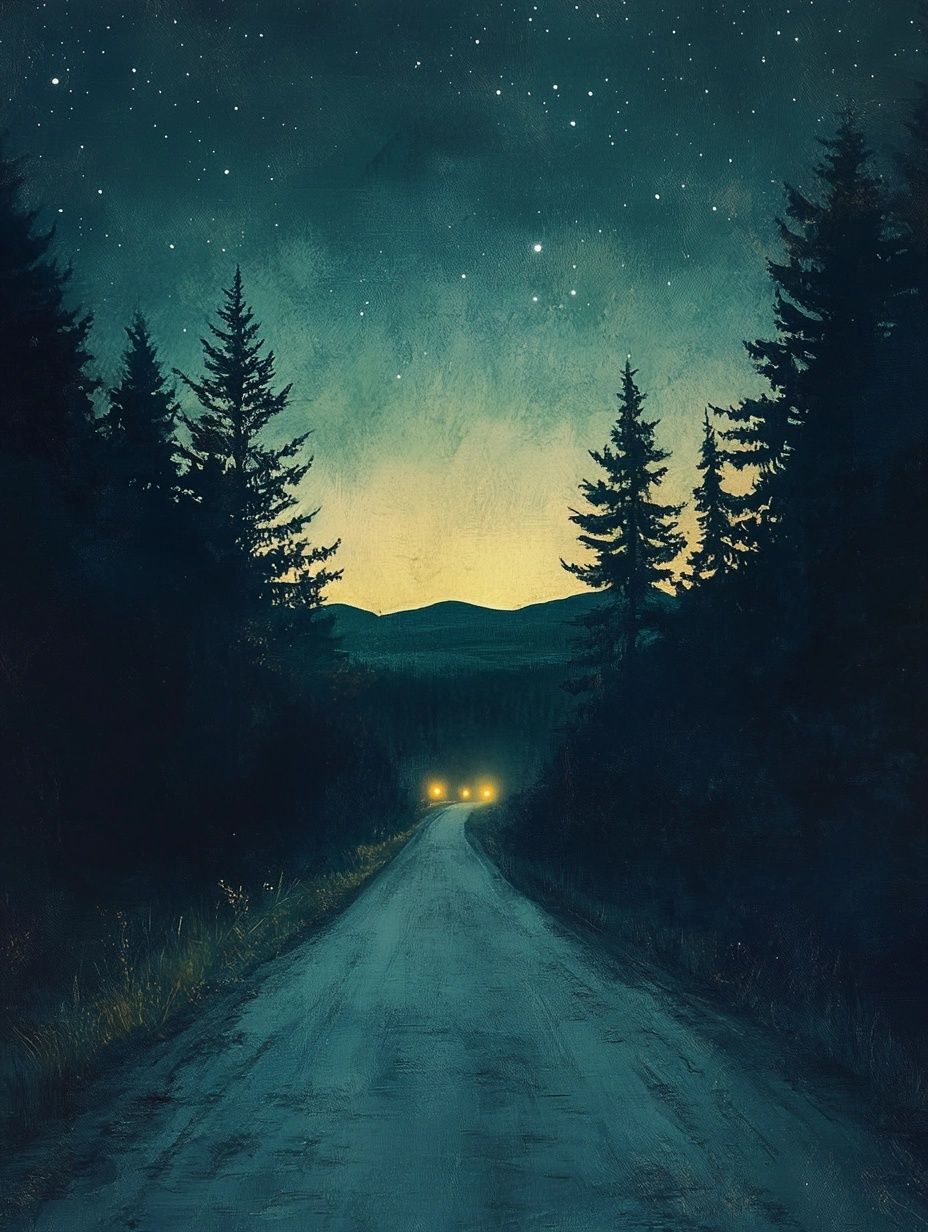
The Mysterious Paulding Light
The Paulding Light, also known as the Dog Meadow Lights, is a well-known phenomenon near Watersmeet in Michigan’s Upper Peninsula.
For decades, people reported seeing mysterious lights floating in the distance. Local legends say it’s the ghost of a railroad worker, while others say it’s the spirit of a mail man who died in the woods.
But sorry ghost hunters, this one turned out to be of the decidedly normal nature - researchers have concluded the lights are actually headlights and taillights from cars traveling on US-45!
Minnie Quay
Minnie Quay’s ghost is said to haunt the shoreline of Lake Huron in Forester, Michigan.
As the story goes, Minnie was a young woman who lost her love, a sailor, to the lake’s dangerous waters. In her grief, she threw herself into the water and drowned.
People report hearing her cries at night and seeing her figure walking along the shore, still mourning her lost love.
The Michigan Triangle
The Michigan Triangle is an area in Lake Michigan that has been the center of strange and unexplained events.
It’s often compared to the Bermuda Triangle due to the number of shipwrecks, plane crashes and disappearances reported in its waters.
One of the most famous incidents involved Northwest Orient Airlines Flight 2501, which vanished in 1950, with no trace of the plane or its 58 passengers ever found.
Fishermen, sailors and pilots still report unusual occurrences in this region, fueling its mysterious reputation.
Fayette Ghost Town
Fayette is a historic US ghost town located in Michigan’s Upper Peninsula that once thrived as an iron smelting hub.
After the industry collapsed in the late 1800s, the town was abandoned, leaving behind well-preserved buildings that draw visitors today.
Reports of paranormal activity, including unexplained voices and apparitions, have earned Fayette a reputation as one of Michigan’s most haunted locations.
It’s a must-see for history buffs and ghost hunters alike.
Haunted Lighthouses
Seul Choix Lighthouse: Located on Lake Michigan, this lighthouse is said to be haunted by Captain Joseph Townsend, who died there in the early 1900s. Visitors report the smell of cigar smoke, phantom footsteps, and a man peering through the windows.
Whitefish Point Lighthouse: Positioned on Lake Superior, it’s associated with the wreck of the Edmund Fitzgerald. Though the lighthouse is active, some believe its tragic connection to the shipwreck has left behind an unsettling presence.


The Holly Hotel
The Holly Hotel in Michigan is famously haunted, with a variety of spirits making their presence known to guests and staff.
The most notable is Mr. Hirst, the hotel’s original owner, often associated with the strong smell of cigar smoke and sightings of a man in formal attire.
Nora Kane, a former hostess, is also frequently seen and heard, sometimes playing piano music.
A playful child spirit roams the kitchen, known for moving objects like the meat cleaver and guests have also reported encounters with a woman in Victorian clothing and other unexplained apparitions.
Fright at Fort Wayne
Detroit’s Fort Wayne, though never the site of a battle, has a haunted reputation tied to its long history as a military facility.
Paranormal investigators report hearing voices, footsteps, and seeing shadowy figures, especially in the Visitor Center.
Women have described seeing legs beneath bathroom stalls that turn out to be empty and lights are known to flicker unexpectedly.
Regular ghost tours attract thrill-seekers eager to experience its unsettling atmosphere.
Michigan cryptids & mythical creatures
Michigan Dogman
First reported by lumberjacks in the 1800s, the Dogman cryptid is said to be a half-man, half-dog creature that roams the forests of northern Michigan.
It can walk on two legs or run on all fours. Modern sightings surged after a 1987 song by a Traverse City DJ about the Dogman prompted listeners to share their own encounters.
Loup-Garou
Detroit’s French heritage brings stories of the loup-garou, a werewolf-like creature. In one tale, a man transforms into a loup-garou to kidnap a woman but is turned into stone by divine intervention. The loup-garou can also be found in Louisiana folklore.
Both legends highlight Michigan’s unique blend of Native American, French and modern folklore.
Wendigo
The Wendigo is a cryptid from Algonquin Native American mythology and is described as a cannibalistic spirit or creature that preys on humans.
It's said to possess people, driving them to commit acts of greed or violence. Often depicted as a gaunt, icy creature with monstrous features, the Wendigo remains a chilling figure in stories from northern Michigan, especially during the harsh winter months.
Indigenous tales of the Wendigo are similarly popular north of the US border, in Canada.
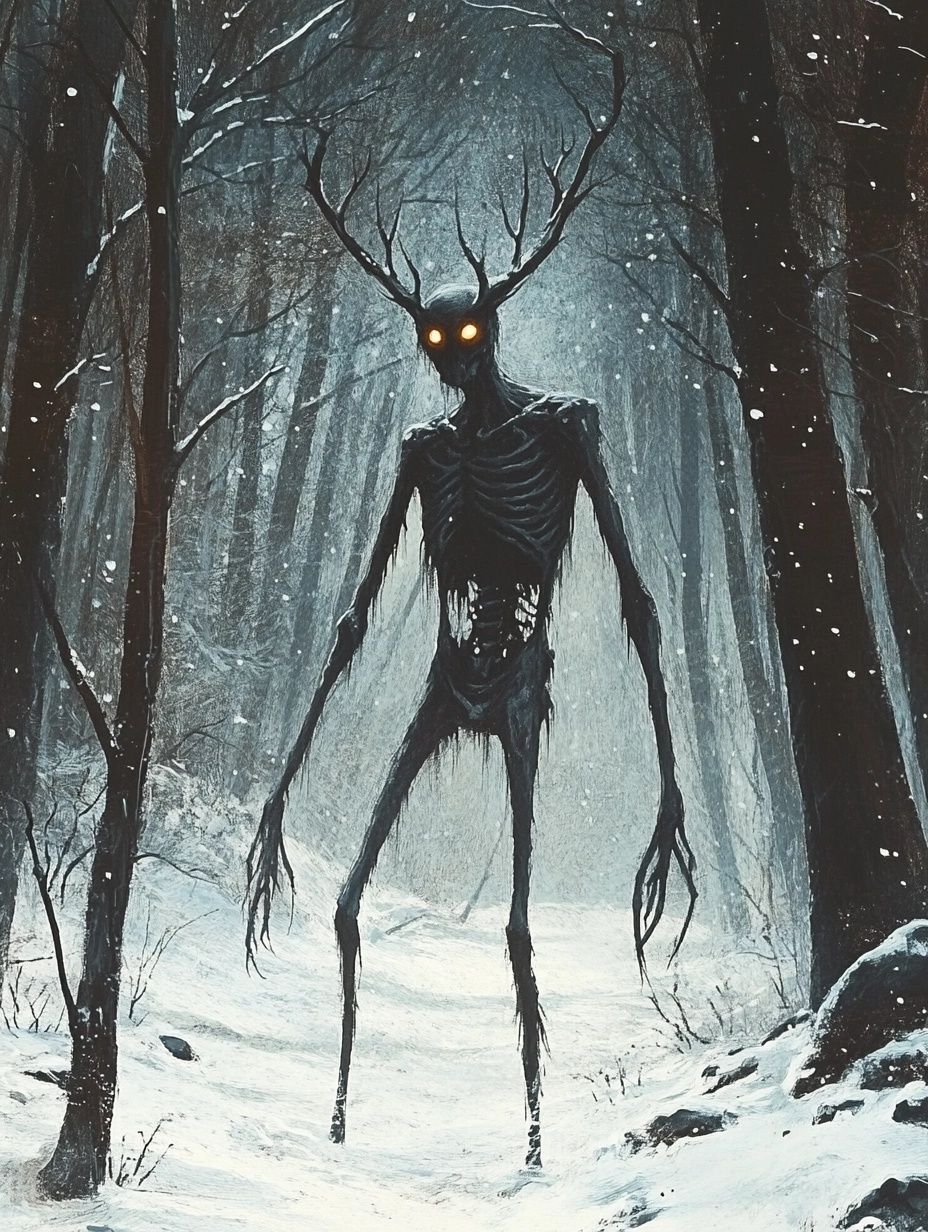
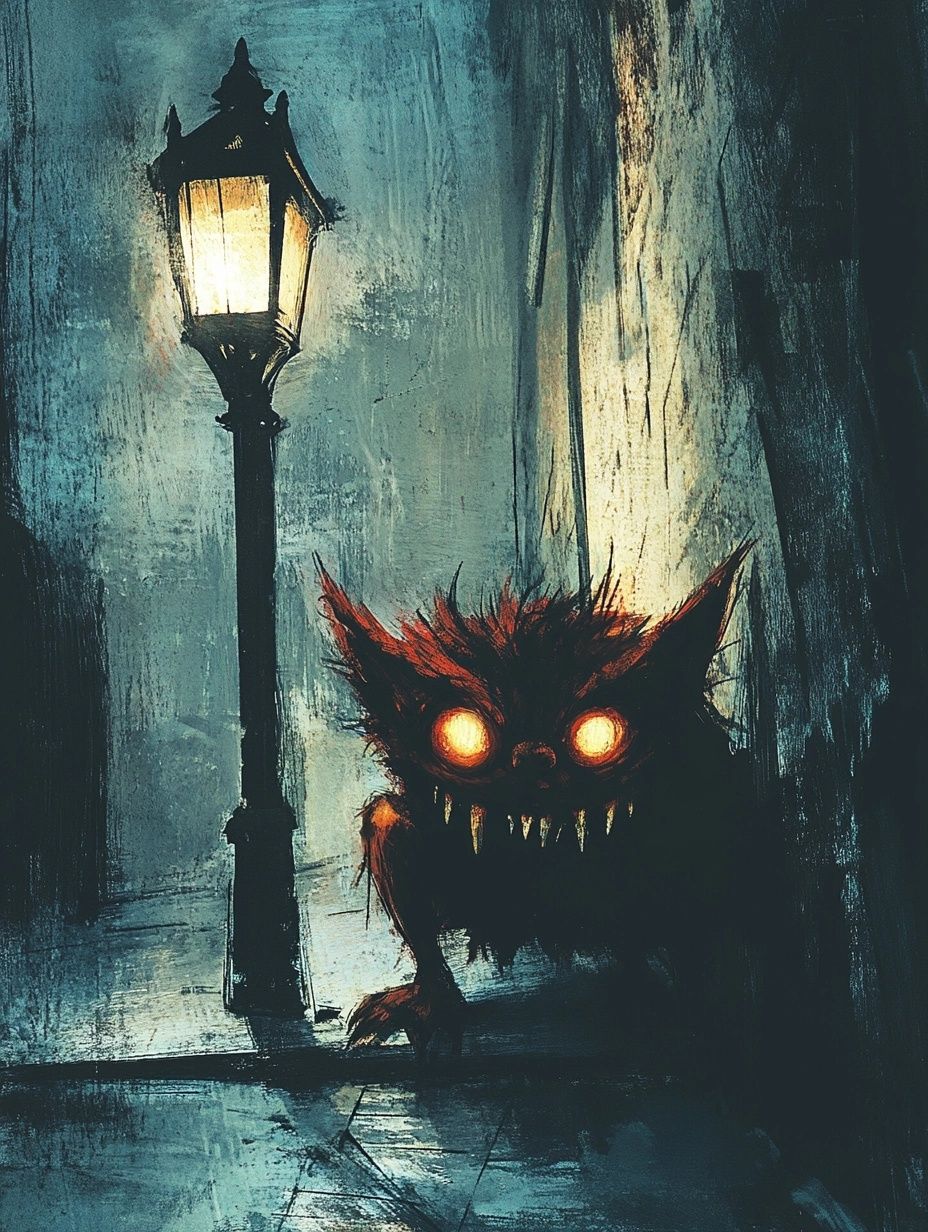
Lake monsters: Bessie and Pressie
Michigan’s Great Lakes are said to harbor mysterious creatures:
- Bessie: Also known as the Lake Erie Monster, Bessie has been described as a snake-like creature about 40 feet long. Sightings date back to 1793, with many reported off the Ohio coast.
- Pressie: Named after Presque Isle in Lake Superior, Pressie is another serpent-like creature seen near Whitefish Point and Pictured Rocks. One of the most notable sightings was in 1977 when a hiker photographed what appeared to be a large, snake-like creature near the Porcupine Mountains.
The Nain Rouge
The Nain Rouge, French for "Red Dwarf," (and also called Red Imp or Devil of Detroit) is a goblin-like creature tied to Detroit’s history. It was said to have appeared before several key events, including the 1805 fire that destroyed Detroit and the 1967 riots.
Described as a small, red-eyed creature with super-sharp teeth, the Nain Rouge has inspired an annual tradition called the Marche du Nain Rouge, where locals "banish" the figure in a parade.
Melon Heads
The Melon Heads are humanoid creatures with small bodies and large, bulbous heads said to lurk near Saugatuck.
Stories suggest they may be descendants or spirits of children from a hospital near the Felt Mansion.
Similar legends of Melon Heads appear in Ohio and Connecticut.
Indigenous legends of Michigan
The Turtle and Mackinac Island
According to Indigenous creation stories, the glorious Mackinac Island was formed on the back of a giant turtle.
In many versions of the tale, the turtle offers its back to support the land after a muskrat successfully brings soil from the bottom of the lake. The name “Michilimackinac” is thought to come from the Ojibwe word mishimikinaak, meaning "large turtle."
Legend of the Sleeping Bear Dunes
The Sleeping Bear Dunes on Lake Michigan’s shoreline are tied to a Native American legend.
A mother bear and her two cubs swam across Lake Michigan to escape a forest fire. Exhausted, the cubs couldn’t keep up and the mother bear reached the shore alone.
She climbed to a high point to wait for her cubs, eventually falling into an eternal sleep.
To honor her, the Great Spirit created the Sleeping Bear Dunes and the Manitou Islands to mark where her cubs disappeared.
The Serpent and the Panther
Great Lakes tribes believed in powerful water spirits that controlled the lakes:
- Mishipeshu (The Water Panther): A horned creature with scales and a long tail, Mishipeshu was feared for its ability to cause storms or crack the ice beneath travelers. Offerings were made to ensure safe passage.
- Misiginebig (The Great Serpent): A giant horned snake said to have caused the Great Flood. It was considered a sworn enemy of the creator spirit Nanabozho.
These beings were kept in check by the Thunderbirds, powerful spirits that battled them with lightning and thunder.

Unexplained phenomena of Michigan

UFO Sightings in Michigan
Michigan has a long history of UFO sightings, with some of the most notable cases occurring in the 1960s.
One of the most famous incidents happened in March 1966 near Dexter and Hillsdale, where multiple witnesses, including a police officer, reported seeing strange lights in the sky.
The event gained national attention when Project Blue Book, the U.S. government’s UFO investigation, attributed the lights to “swamp gas.”
Despite the explanation, the sightings remain a hot topic among UFO enthusiasts.
Grey Tower Road and Michigan Theater
In Grass Lake, Grey Tower Road is said to be haunted by an unfriendly presence. Visitors report feeling uneasy, hearing unexplained noises, and seeing shadowy figures.
In Jackson, the Michigan Theater has its own ghostly reputation, particularly in the basement near the boiler room.
People have described a strong sense of unease and unexplained activity in this historic building.
The Demon Tree of Almont
Near an old church and a Freemason cemetery in Almont, a gnarled tree has earned the nickname “The Demon Tree.”
Local legends claim the tree is cursed, with reports of shadowy figures, strange sounds, and a nearby cemetery featuring gravestones inscribed in Latin from the 1700s adding to the creepy atmosphere.
Michigan’s folklore is as vibrant and varied as its geography - shaped by the majestic Great Lakes, sprawling forests and quiet rural towns. These legendary and mythical stories reflect centuries of influence, from Indigenous traditions to the tales of settlers and industrialists.
Whether it’s ghosts tied to historic landmarks, cryptids lurking in the wilderness or myths born from its vast waterways, Michigan’s legends are a testament to the cultural and natural forces that have shaped this unique region.
Article sources
- Anderson, Roger W. "From Le Nain Rouge to Voyageurs: Celebrating French Heritage in Today's Midwest." Ohio History 131, no. 1 (2024).
- Fee, Christopher R., and Jeffrey B. Webb, eds. American Myths, Legends, and Tall Tales: An Encyclopedia of American Folklore [3 volumes]. Bloomsbury Publishing USA, 2016.
- Dorson, Richard M. "Dialect Stories of the Upper Peninsula: A New Form of American Folklore." The Journal of American Folklore 61, no. 240 (1948): 113-150.
- Andrews, Clarence A., and David B. Steinman. "Folk Lore and Legend in the Upper Peninsula:" The Upper Peninsula Is the Birthplace of Michigan"." The Great Lakes Review 11, no. 2 (1985): 64-78.
Explore more North American folklore
11 US ghost towns that are actually haunted
Maybe...if you like escaping the crowds, these towns are not only abandoned but largely unvisited by tourists. Check them out.
Tall tales of Paul Bunyan
Discover the best stories of the North American lumberjack and his mythical friends.


